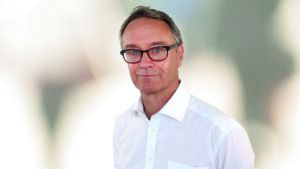Three years ago, I mentioned in an article for ESG Clarity about the loss of the insect biomass, how the sound of spring and summer which brings out insects which are a part of the food chain for our native wildlife, has changed, it’s become much quieter.
This year there has been a lot of comment that there seem to be fewer insects than ever. Whether that’s the case is too early to say, and reports vary, but for me it highlights the continuing loss of biodiversity we’re experiencing. While it’s probably fair to say there is more awareness of this situation than ever before there is an issue as we try to build-back biodiversity, provide habitats for nature and re-wild. And that is establishing what is normality in terms of the health of nature, a concept known as the baseline
When I wrote the article a study in Germany suggested a decline of 75%* in the insect biomass – bee numbers had dropped in the UK by 52%, since 1980 and in the US the honeybee population has declined by 60% in 60 years. What is a healthy population, what does the world need the population to be? And perhaps of equal importance are peoples experience, my baseline is back in the 1970’s, but for someone born in the 1990’s their experience of the extent of nature is different and even more so for someone born in 2000 each will have a different baseline – this concept is known as a ‘shifting baseline’.
Less demanding baselines?
As the investment world starts to grapple with the challenge of biodiversity and the Task Force on Nature Related Financial Disclosure (TNFD) gains momentum the issue of baselines may become a common topic of discussion – I wonder if business will push for a less demanding baseline than might be ideal?
The TNFD is providing a common framework for businesses to assess their impact on nature which has four phases – Locate, Evaluate, Assess and Prepare (LEAP). It asks the question which biomes and ecosystems does a businesses activities interface with and how important are those ecosystems. Are they operating in areas of rapid decline, high biodiversity or high-water stress. How dependent is the business on those locations and how important are they to the business.
The next two stages look at how to assess the risk and the strategies in place to deal with them. TNFD has been developed in conjunction with The Global Biodiversity Framework and science-based targets (SBTs), the former plans to halt and reverse nature loss, putting 30% of the planet and 30% of degraded ecosystems under protection by 2030. It contains not surprisingly a lot of good intentions, including halving food waste by the deadline – but 2030 is just 6.5 years away, it’s a very tall order.
These calls to action that the investment world is beginning to heed are to be welcomed but are coming after so much damage has been done, and frustratingly long after the warning bells were first sounded. Such is the nature of investment and investors, that only when their returns are threatened do they do anything – I am generalising here.
For me their remains an elephant in the room; the economic model on which the world works is badly flawed, but the investment community seem to believe we can continue with our current lifestyles and growing our wealth with a sustainable hat on. That all we need to do is change our practices to be sustainable and everything will be ok. I don’t think this is the case, I think we need to address our addiction to consumption, the wealthy developed nations need to consume less, demand less and take the stress out of the economic system. If the developing world is going to raise its living standards, which it needs to do to close the gap, to have better healthcare, better jobs, better prospects, better living conditions and so forth, and with population growth set to take the number of humans in the world to 10bn something has to change.
Change is possible, the energy crisis triggered by the war in Ukraine saw the European Union reducing gas consumption by 15% on average – product design with longevity in mind and long term servicing rather than built in obsolescence – a corporate focus on durability of profits rather than maximising profits will build better quality businesses which are robust – smaller locally focused businesses or more regionally diverse business locations requiring less travel – government initiatives to stimulate investment is things such as house insulation, which leads to less energy consumption and so on.
Our demands as a species on the planet’s resources, our consumer lifestyles that drive the global economy are behind climate change and the many interconnected impacts such as biodiversity loss. Sustainable investing is of course about selecting investments which seek to minimise any negative impact on people and the planet whilst hopefully funding positive outcomes. The next two decades will see major changes in the shape of the global economy and perhaps the way we live our lives, and this will be, and already is being driven by a change in consumer, government and business behaviour, but I believe the mind-set around the global economic model also has to change, it’s at the heart of the crisis’s we face.
